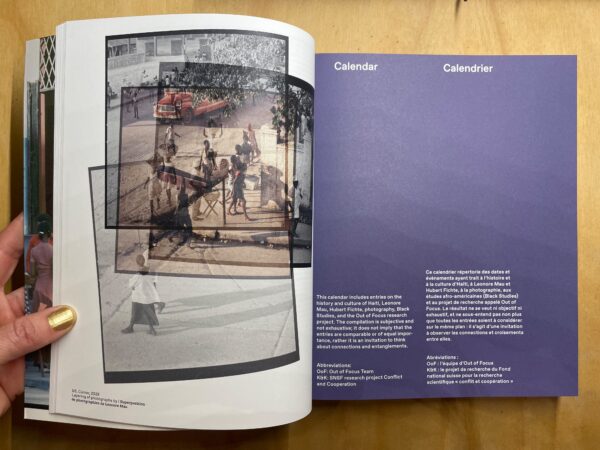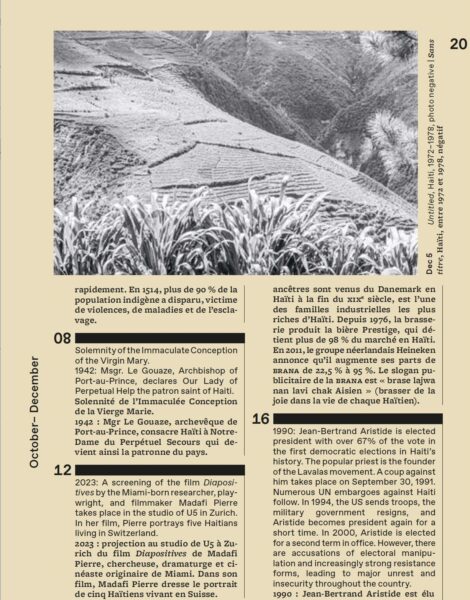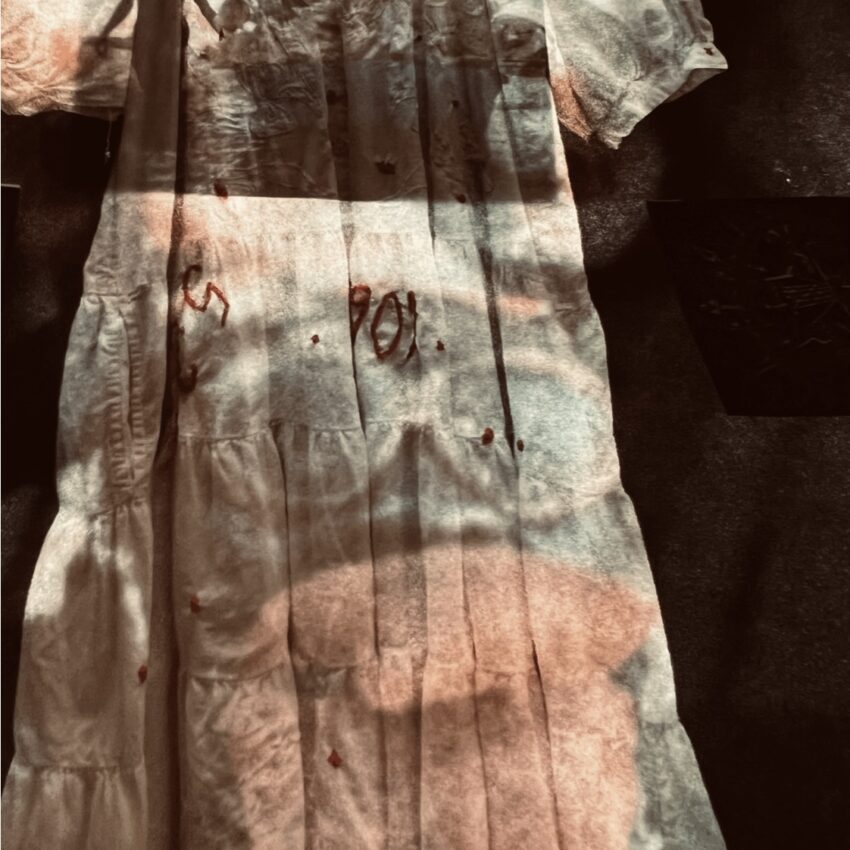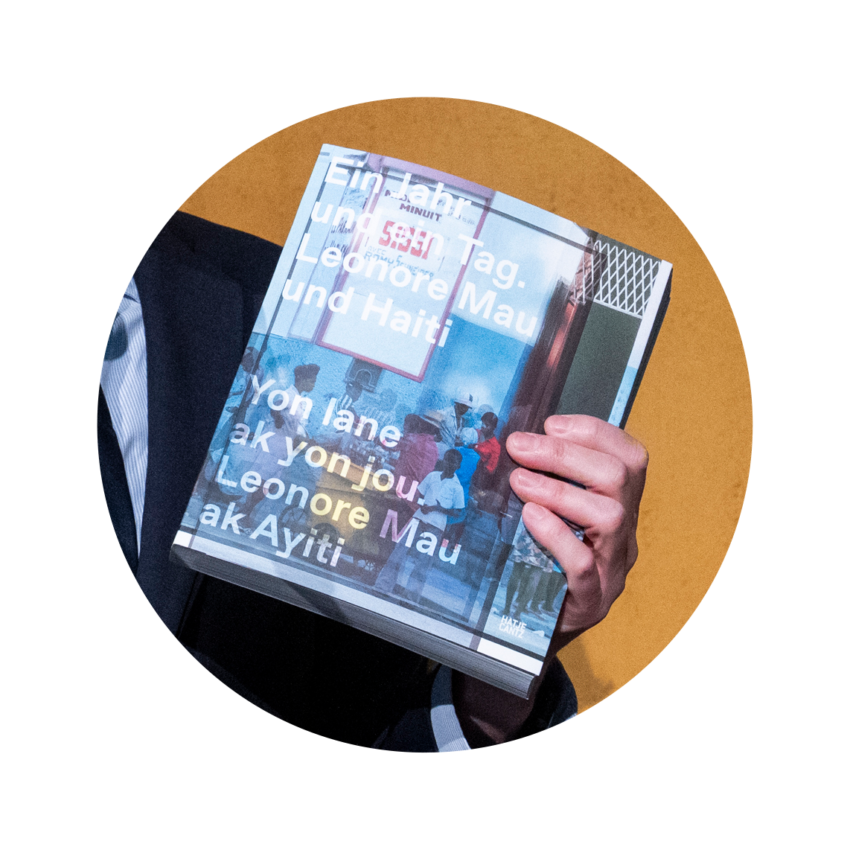Conflict
and
Cooperation
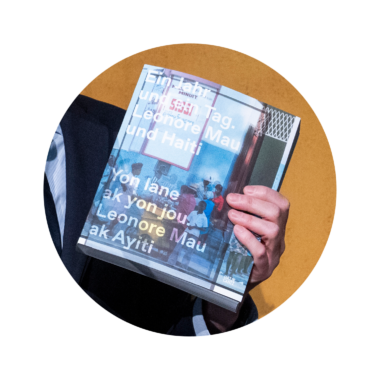

On 16th December 1990: Jean-Bertrand Aristide is elected president with over 67% of the vote in the first democratic elections in Haiti’s history. 35 year later we warmly invite you to the 📚 book launch of A Year and A Day. Leonore Mau and Haiti / Un an et un jour. Leonore Mau et Haïti
The book is the outcome of the SNSF-research project Conflict and Cooperation, which was based at the chair of Prof. Dr. Bärbel Küster at the University of Zurich and will hopefully now find its way into many hands.
Edited by Dora Imhof, Gina Athena Ulysse, U5
Contributions by Yveline Alexis, Kyrah Malika Daniels, Nathalie David, Jean-Ulrick Désert, Hans Fässler, Sasha Huber, Zainabu Jallo, Erol Josué, Dora Imhof, Sabine Lamour, Kettly Mars, Christopher Nixon, Katherine Smith, Gina Athena Ulysse, U5
When? 📆 Tuesday, December 16, 2025, 6-8pm
Where? 🌬️Rooftop 8.C02, Wind Tunnel, ZHdK,Toni-Areal, Zurich (🧤The Wind Tunnel is not heated, so dress warmly.)
